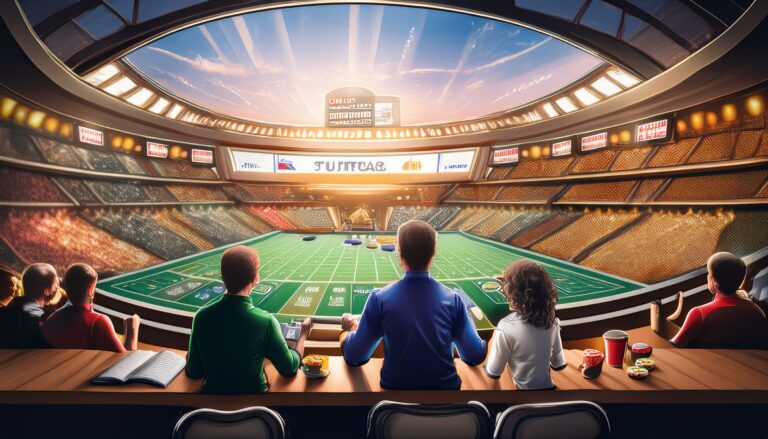Exploring Cricket Stadiums and Their Unique Design Features
Online Cricket ID, Play99exch: Cricket stadiums have a rich history dating back to the 18th century, originating in England as the sport gained popularity among the masses. In the early days, cricket matches were played on open grounds or public fields, attracting large crowds of enthusiastic spectators who gathered to watch the exciting game unfold. As the sport continued to evolve, dedicated cricket grounds began to be developed, providing a more structured and organized environment for players and fans alike.
Over time, the construction of purpose-built cricket stadiums became more common, with iconic venues such as Lord’s Cricket Ground in London, Eden Gardens in Kolkata, and Melbourne Cricket Ground in Australia becoming synonymous with the sport. These stadiums not only served as venues for cricket matches but also as cultural landmarks that brought communities together in a shared love for the game. The history of cricket stadiums reflects the evolution of cricket itself, from humble beginnings to becoming a global phenomenon enjoyed by millions around the world.
Key Architectural Elements of Cricket Stadium Design
Cricket stadium design relies heavily on key architectural elements that not only cater to the needs of the game but also enhance the overall spectator experience. One of the fundamental elements is the playing field itself, which is meticulously maintained to meet international standards. The size and dimensions of the field, as well as the quality of the pitch, are crucial factors that architects and groundskeepers consider in stadium design.
Another essential architectural element is the seating arrangement, which plays a significant role in ensuring an unobstructed view for spectators. The layout of the stands, the proximity to the playing area, and the overall capacity of the stadium are carefully planned to accommodate a large number of fans while providing comfort and safety. Additionally, the incorporation of VIP boxes, corporate hospitality suites, and premium seating options adds a touch of luxury to the stadium design, catering to a diverse range of spectators.
Innovative Features in Modern Cricket Stadiums
Modern cricket stadiums have embraced cutting-edge technology and innovative features to enhance the overall fan experience. One of the notable additions in recent stadium designs includes the installation of giant LED screens around the arena, providing spectators with instant replays, player statistics, and engaging visual content during matches. These screens not only add to the excitement of the game but also offer fans a more immersive viewing experience.
Furthermore, many modern cricket stadiums are incorporating state-of-the-art sound systems to amplify the atmosphere and create a more dynamic environment for fans. The strategic placement of speakers throughout the stadium ensures that every corner resonates with cheers, music, and commentary, enhancing the energy levels and engagement of spectators. This integration of sound technology aims to make the stadium experience more interactive and captivating for cricket enthusiasts.
The Evolution of Seating Arrangements in Cricket Stadiums
As cricket stadiums have evolved over time, seating arrangements have played a significant role in enhancing the spectator experience. In the earlier days, simple wooden benches surrounded the cricket ground, providing a basic but functional seating option for fans. However, as the popularity of the sport grew and the demand for more comfortable viewing experiences increased, stadium designs began to incorporate individual seats, offering more comfort and better views of the game.
In modern cricket stadiums, seating arrangements are carefully planned to ensure that every spectator has a clear view of the playing field. The introduction of tiered seating, hospitality boxes, and family zones has transformed the way fans engage with the game. Additionally, the inclusion of premium seating options near the players’ pavilion has added a touch of exclusivity to the stadium experience, catering to fans who seek a more luxurious setting while enjoying the cricket match.
The Role of Technology in Enhancing the Fan Experience at Cricket Stadiums
In today’s digital age, technology plays a pivotal role in enhancing the fan experience at cricket stadiums. Through the integration of large high-definition screens and state-of-the-art sound systems, spectators can now enjoy an immersive viewing experience, bringing them closer to the action on the field. These technological advancements not only elevate the overall atmosphere of the stadium but also allow fans to feel more engaged and connected to the game.
Furthermore, the use of mobile applications and virtual reality technology has revolutionized how fans interact with cricket stadiums. With the ability to access real-time statistics, replays, and exclusive content right at their fingertips, spectators can enhance their understanding of the game and stay updated on all the latest developments. Additionally, virtual reality experiences provide fans with the opportunity to feel like they are sitting in the best seats in the house, even if they are thousands of miles away from the actual stadium.
Sustainability Practices in Cricket Stadium Construction
Cricket stadiums around the world are increasingly incorporating sustainability practices into their construction processes. From using renewable materials to implementing energy-efficient systems, these stadiums are aiming to minimize their environmental impact. One common practice is the integration of green spaces within the stadium design, not only enhancing the aesthetics but also aiding in temperature regulation and promoting biodiversity.
Furthermore, many modern cricket stadiums are implementing water conservation measures such as rainwater harvesting and water recycling systems. By reducing water consumption and utilizing alternative sources, these stadiums are able to operate more sustainably and reduce their reliance on traditional water sources. Additionally, incorporating sustainable transportation solutions, such as bike racks and electric vehicle charging stations, encourages fans to choose eco-friendly modes of transportation when attending matches.
Iconic Cricket Stadiums Around the World
Lord’s Cricket Ground in London, England, is widely regarded as the “Home of Cricket.” Established in 1814, this iconic stadium holds a special place in cricketing history. With its traditional pavilion and picturesque setting, Lord’s has seen some of the most historic moments in the sport, making it a must-visit for any cricket enthusiast.
The Melbourne Cricket Ground (MCG) in Australia is another legendary cricket venue. Known for its sheer size and capacity to hold over 100,000 spectators, the MCG has hosted numerous memorable matches, including the first-ever Test match in 1877. Its iconic appearance and rich cricketing heritage solidify its status as one of the most iconic cricket stadiums in the world.
How Climate and Location Influence Cricket Stadium Design
Cricket stadium design is greatly influenced by the climate and location where the stadium is situated. Factors such as temperature, precipitation levels, and wind patterns play a crucial role in determining the layout and construction of the stadium. For instance, stadiums located in hot and arid regions may incorporate features like shading structures or cooling systems to ensure the comfort of players and spectators.
In regions prone to frequent rain or inclement weather, stadium designs often include features such as retractable roofs or advanced drainage systems to minimize the impact of weather-related disruptions on matches. Additionally, stadiums located in windy areas may need to consider the orientation of the playing field and the construction of wind barriers to maintain playing conditions. Overall, the climate and location of a cricket stadium are key considerations that architects and designers must take into account to create functional and efficient sporting venues.
The Influence of Local Culture on Cricket Stadium Architecture
Local culture plays a significant role in shaping the architecture of cricket stadiums around the world. From the vibrant colors and intricate designs influenced by traditional art forms to the use of locally sourced materials, these stadiums often reflect the unique cultural identity of their surroundings. Whether it’s the traditional motifs adorning the façade or the incorporation of elements from local festivals and rituals, architects draw inspiration from the rich heritage of the communities in which the stadiums are located.
The layout and design of a cricket stadium can also be influenced by the social and cultural practices of the region. For example, stadiums in countries where cricket is more than just a sport, but a way of life, may feature spaces for community gatherings and events beyond match days. The integration of cultural elements not only adds character to the stadiums but also creates a sense of belonging for fans and players alike, fostering a deeper connection to the sport and the place in which it is played.
Future Trends in Cricket Stadium Design
One of the key future trends in cricket stadium design is the increasing focus on sustainability. As environmental concerns become more prominent, stadiums are incorporating eco-friendly elements such as solar panels, rainwater harvesting systems, and green roofs. This not only reduces the environmental impact of the stadiums but also helps in cutting down on operational costs.
Another emerging trend is the integration of cutting-edge technology to enhance the overall fan experience. From high-tech scoreboards and immersive audio-visual systems to mobile apps that provide real-time updates and interactive features, stadiums are aiming to create a more engaging and interactive environment for spectators. This trend is driven by the desire to cater to the changing preferences of modern sports fans who seek more than just the on-field action during their stadium experience.







